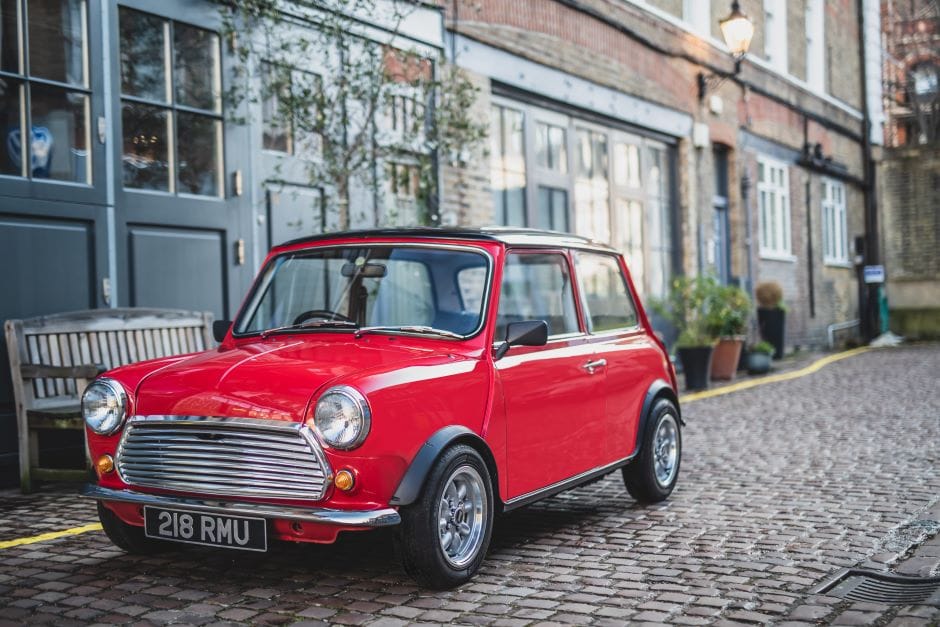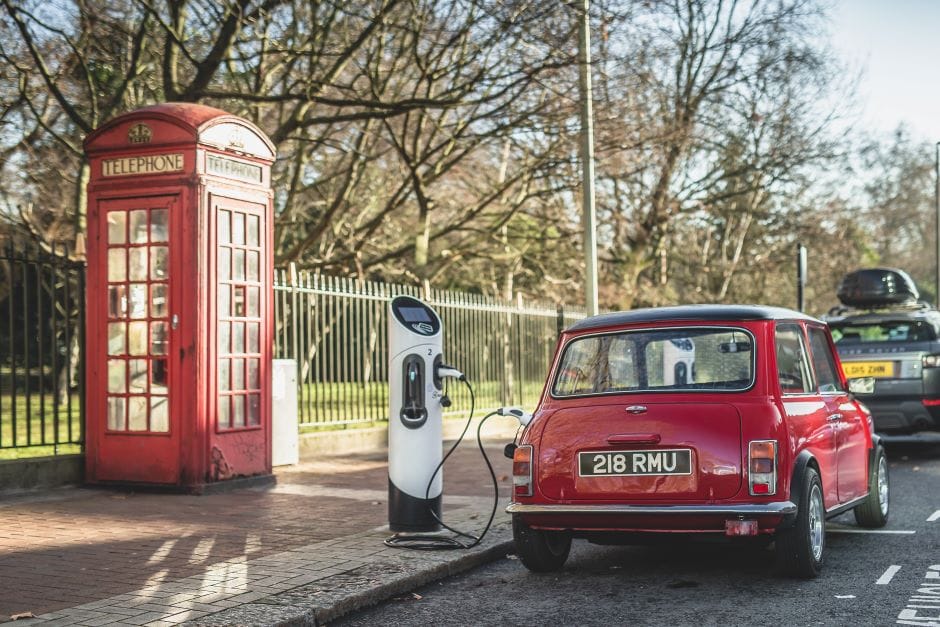
The internal combustion engine’s days may soon be numbered. At least that’s the stark warning given by politicians who are seeking to ban the sale of petrol and diesel cars in the UK by 2040 (or possibly as early as 2030 under new proposals). It’s a sentiment that’s been steadily growing for a number of years, with car manufacturers ploughing vast amounts of money into developing new electric models. But recently, another trend has started to appear: electric conversions for classic cars.
At present, cars over 40 years old are protected against the ever-tightening emissions requirements directed at newer models. You can, for instance, drive through the London Ultra Low Emissions Zone in a 1948 Series 1 Land Rover, yet you can’t do so in a 10-year-old Ford Fiesta. Whether or not that will still be the case in the future, though, remains to be seen. And there are also people out there who specifically want the retro style of a classic car combined with the guilt-free image of a modern electric drivetrain.
Enter the SWIND E Classic – a meticulously re-engineered take on the classic Mini, which substitutes the old four-cylinder BMC A-Series engine for an 80kW (110bhp) electric motor.
It’s coupled to a 24kWh lithium ion battery, which gives a real-world range of 125 miles (about the same as the fuel tank on the original Mini).
Many of the fundamental attributes have been carried over from the original car. At around 720kg, it does weigh slightly more than a classic Mini, but it’s still far closer to the 1950s original than its modern namesake. It remains front-wheel drive too, albeit with a bespoke single-speed transmission, while the suspension is Alex Moulton’s ingenious hydrolastic design, taken from the original Mini. The ride height has been lowered fractionally on this example, but it sits on period-correct 12-inch wheels. Even the charging socket is hidden underneath a replica filler cap.

As you can see, this is not an attempt at transport for the masses, but rather a toy for those with a passion for nostalgia. It had better be a pretty serious passion because the E Classic starts at £79,000. That’s enough to buy you a new, all-electric Jaguar I-PACE and a perfectly usable classic Mini. But don’t judge the E Classic too soon, because its price tag is about on par with the re-engineered petrol-powered Minis offered by David Brown (and indeed some of the more valuable original examples). The question is more whether it can deliver the same level of enjoyment for the lucky few able to afford it.
Step inside and the Sixties vibes are every bit as strong as you’d hope. At a glance, it’s virtually indistinguishable from an original Mini cabin, albeit with a significant step up in fit and finish. Look closer, though, and you’ll spot a few well-disguised mod cons. The fuel gauge has become a charge indicator for the battery, the oh-so-retro bucket seats are now electrically heated and there are even underfloor heat pads to further supplement the original Mini’s notoriously inadequate heater. Options include a DAB radio with satellite navigation, Apple CarPlay and Android Auto, plus air-conditioning, power steering and an electrically operated sunroof.
Originality at the heart
In some respects, the most significant addition to the cabin is the enlarged transmission tunnel that runs down its centre. This contains part of the T-shaped battery pack, which extends out beneath the rear seats. SWIND had to modify the floor pan to accommodate this, which is a fairly significant undertaking. The battery pack itself is also a bespoke item, designed to slot in without impinging on the boot space. The position of the battery pack means that the centre of gravity has dropped by some 44mm compared to the donor car and the front-to-rear weight distribution has improved from 68:32 to 57:43.
This sort of thing is all in a day’s work for SWIND’s parent company, Swindon Powertrain; the Wiltshire outfit works with several major car manufacturers behind the scenes and currently builds the engines for more than half the British Touring Car Championship grid. As the company is at pains to point out, however, it’s very different to the ‘drop in’ conversions offered for some other classics. Here, the engineers have gone out of their way to develop a solution that fits seamlessly within the original design.
Head out on to the roads around the company’s Swindon HQ and the first thing that strikes you is the performance. It’s certainly not Tesla-fast – and the initial slug of torque does fade away fairly rapidly – but there’s a real kick in the back when you put your foot down. At the same time, the pedal response is progressive and easy to modulate, while the clutch-free transmission makes pottering around town an absolute doddle. The regenerative braking has been carefully calibrated too, giving just the right amount of retardation when you lift off the accelerator. This has also allowed SWIND to remove the brake servo, improving pedal feel without compromising the overall stopping power.
Much has been made of the Mini’s go kart-like feel over the years and it’s still very much in evidence here, with minimal body roll, bags of steering feel and an impressive sense of agility.
What I wasn’t expecting quite so much was the soundtrack; the motor is far from silent and there’s a distinct chatter from the transmission. The latter is a result of the so-called cogging torque that afflicts permanent magnet motors when they’re off-load – a small spike of electromagnetic force as the magnets on the rotor pass the steel teeth on the stator. You can’t feel this effect from the driver’s seat – the torque it produces is only in the range of 2 or 3Nm – but it’s just enough to set up an oscillation in the drivetrain. The SWIND engineers say they will be able to overcome this in the production models with careful control of the motors, but part of me wishes they’d leave things as they are. At the moment, it sounds like the straight-cut gearbox on a classic rally car.
In fact, perhaps the greatest compliment you can pay the E Classic is that you rapidly forget that it’s powered by electricity. It handles, responds and, at times, even sounds like an original Mini. The secret to this is that the engineers have removed the weak link of the original design – the wheezy, arthritic BMC A-Series – but gone to great lengths to retain its other attributes.
Had this car been a 12-cylinder Ferrari or a rumbling V8 muscle car, I’m not so sure its character would have survived the conversion process. But here at least, the classic feel is very much alive and well, whatever the future may have in store.




Nanogenerator consumes CO2 to generate electricity
Nice to see my my views being backed up by no less a figure than Sabine Hossenfelder https://youtu.be/QoJzs4fA4fo